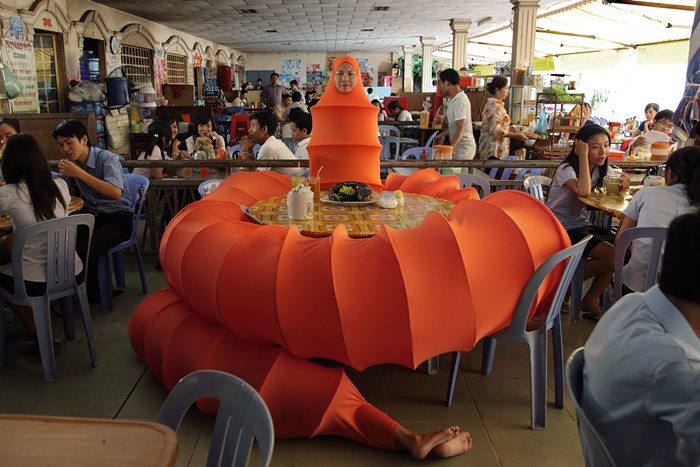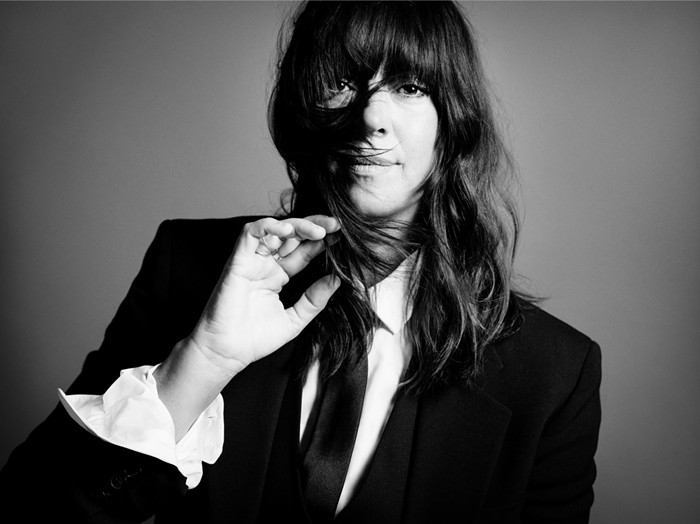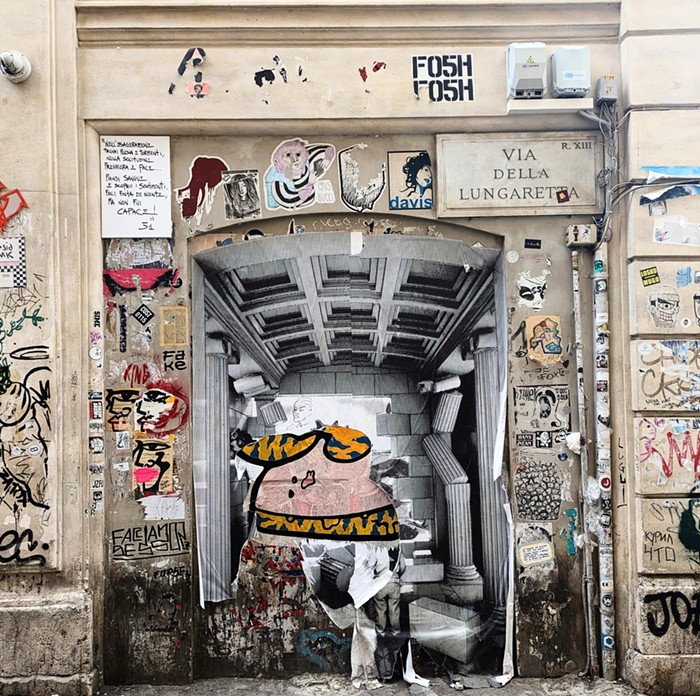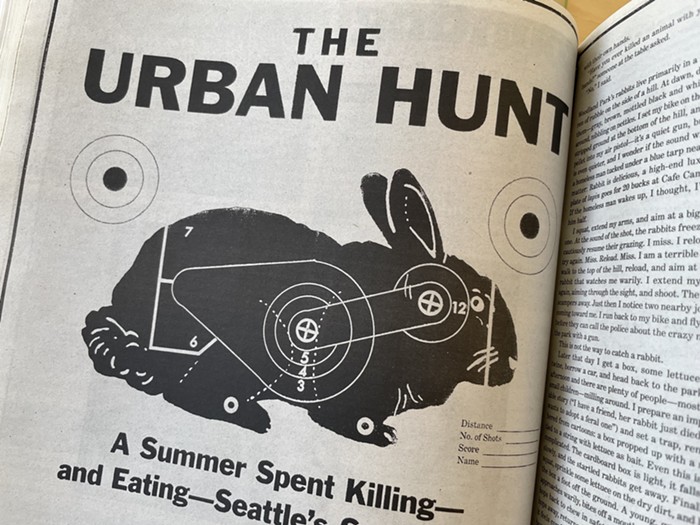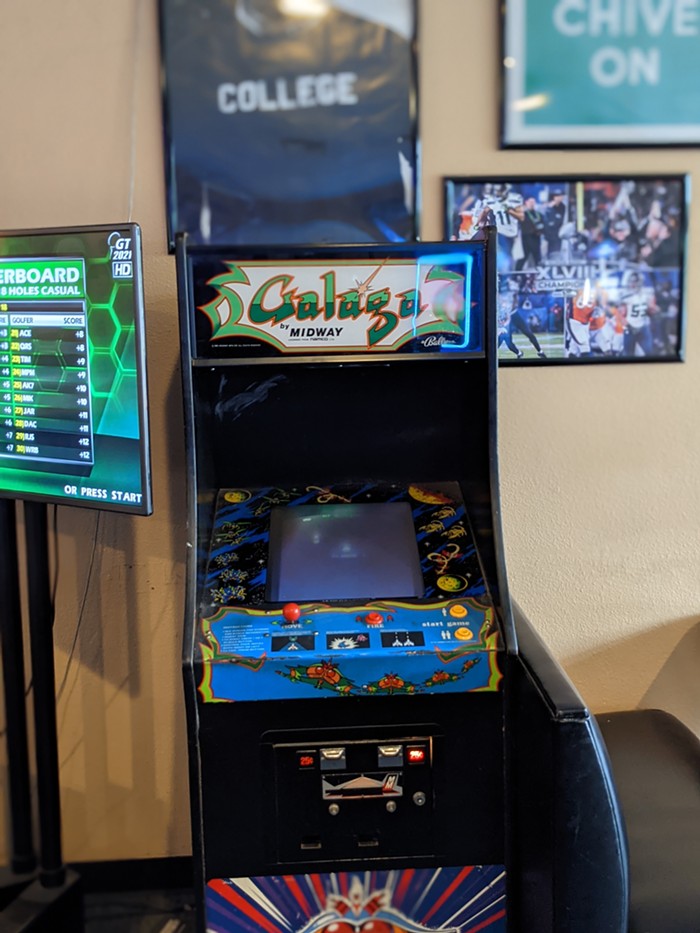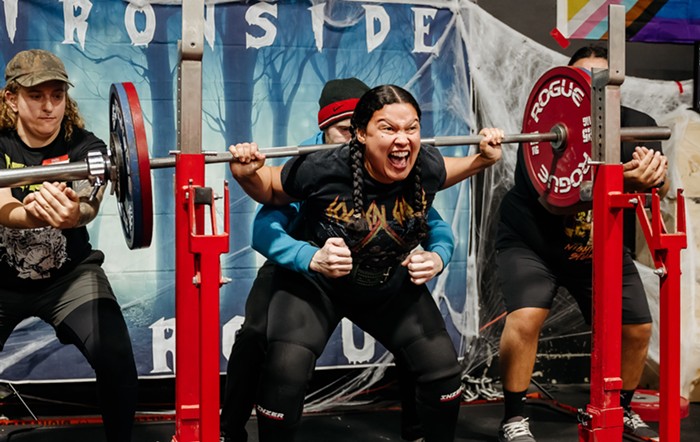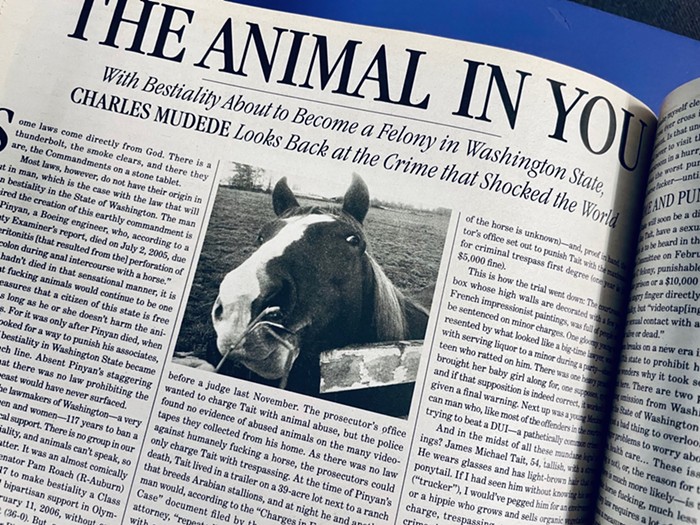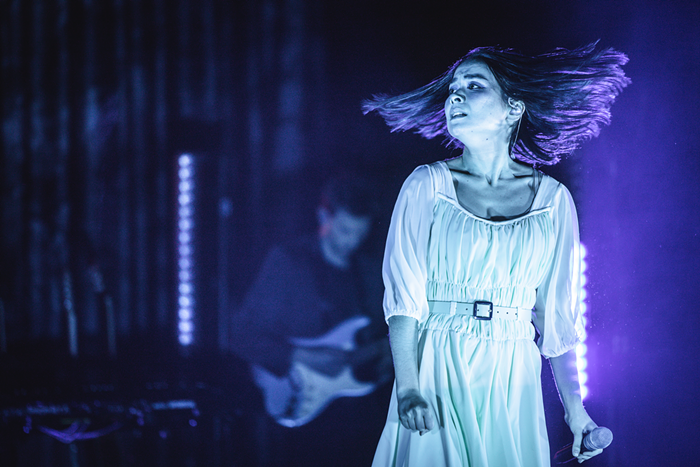There are six strong shows by female artists in Seattle at the moment, causing a blog troll to complain recently about the "'pack of girl artists' that annoy and offend the sensibilities with their frivolous, neurotic, delicate, and idiosyncratic tendencies... like a Jane Austin [sic] movie [sic?]." Troll, meet the ovaries of Mugi Takei.
Takei moved to Seattle in September for no particular reason. She was born in New York in 1977 to Japanese parents who soon went back to their home country. She longed to come back and did once, briefly, but by the time she returned for grad school at Cranbrook Academy of Art in Detroit—well, it was 2008, and the whole country was going in the direction of Detroit.
So the sadness and longing in her drawings and video animations of women is both personal and world-reflecting. The women wait, bleed, jump, cry, scatter seeds, dream of drowning, sniff, drip from their nipples, lick their fingers and put them between their legs. Women in Takei's family have traditionally died in childbirth (her mother almost did)—she's inherited palpable fear.
Takei's classical training at college in Belgium aside, she has always drawn, and always in nonclassical ways. But her production ramped up when, traveling in Malaysia in 2005, she was racked with tuberculosis and had to convalesce for a year at her parents' isolated home in Japan. She can't be as active as before—but her drawings, made in gouache and pencil on paper, come out in droves. There are 123 tacked on the walls at Cullom Gallery for her first Seattle show, along with five short video animations in an aptly eerie dark closet.
In one video, a woman in a bathtub is engulfed by the blood emerging from between her legs. These women occupy a surpassingly weird but familiar world in which they're deeply vulnerable yet totally self-possessed—and separate, like how French artist Sophie Calle presents herself. (Takei's hero/ines include Marlene Dumas, Louise Bourgeois, and The Scream's Edvard Munch. Her mentor at Cranbrook was Liz Cohen, whose project of building a competitive car while bikini modeling for it showed at Lawrimore Project.)
In Takei's art, sheer fabrics mask and expose the bodies at the same time. Skin is decorated with floppy hands that form pretty patterns—but of molestation. Scenes in movies or photographs can be source materials, or Takei starts with titles that come from her writerly imagination. When I held you I saw a bright orange light inside my head is one title; her master's thesis included a fine piece of prose the gallery director will give you if you ask, and Pilot Books is including Takei in a reading at the gallery on March 24. There's a new artist in town. ![]()


